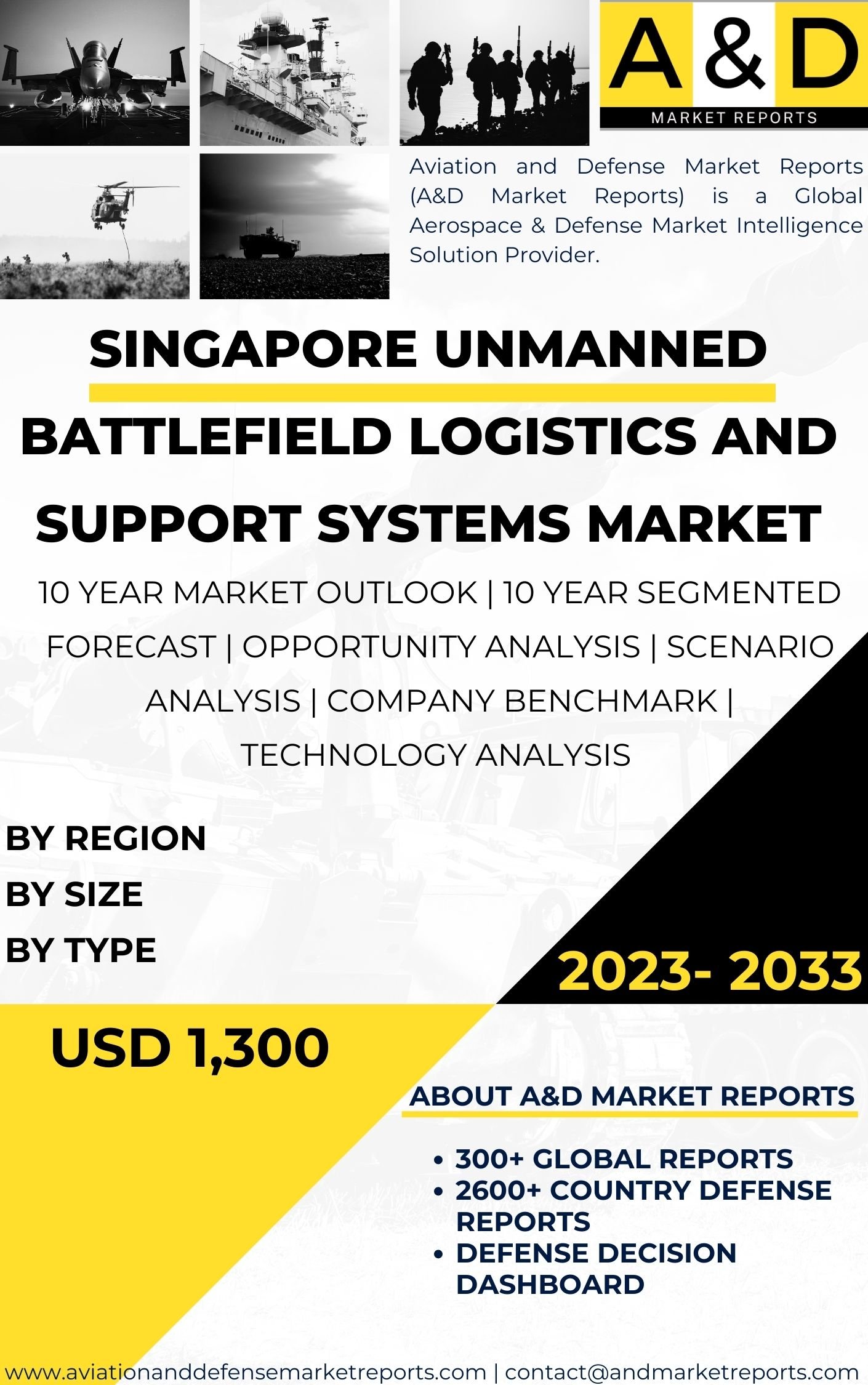Description
The unmanned battlefield logistics and support systems market in Singapore has experienced significant growth in recent years, driven by the country’s commitment to enhancing its defense capabilities, improving the efficiency of military operations, and leveraging emerging technologies to gain a competitive edge in modern warfare. Unmanned battlefield logistics and support systems refer to the use of unmanned vehicles and autonomous technologies to transport supplies, equipment, and personnel, providing critical support to military forces in the field. This article provides an overview of the Singapore unmanned battlefield logistics and support systems market, including key drivers, major players, applications, challenges, and future prospects.
Singapore’s commitment to defense modernization and readiness has been a primary driver for the growth of the unmanned battlefield logistics and support systems market. As a small nation with strategic maritime and land interests, Singapore faces unique security challenges and prioritizes maintaining a strong and agile defense force. The use of unmanned systems in battlefield logistics enhances the efficiency of military operations, enabling rapid deployment and resupply of troops, reducing the risk to personnel, and improving overall mission effectiveness.
The country’s focus on leveraging emerging technologies and innovation in defense has also contributed to the demand for unmanned battlefield logistics and support systems. As a leading technology hub in Southeast Asia, Singapore actively explores the application of advanced technologies, such as artificial intelligence (AI), robotics, and autonomous systems, in various sectors, including defense. Adopting unmanned systems in battlefield logistics aligns with Singapore’s vision of becoming a smart and technologically advanced defense force.
Furthermore, the growth of the unmanned systems industry in Singapore has supported the development of unmanned battlefield logistics and support systems. The country’s defense industry has been actively involved in research, development, and production of unmanned vehicles, autonomous technologies, and integrated logistics systems. Collaborating with international defense companies also allows Singapore to access cutting-edge unmanned technologies and benefit from their expertise in designing and producing advanced support systems.
The applications of unmanned battlefield logistics and support systems in Singapore are diverse and extend beyond traditional military operations. One of the primary applications is unmanned aerial vehicles (UAVs) or drones used for logistical support, including delivering supplies, medical equipment, and emergency aid to troops in the field. These UAVs provide a quick and efficient means of transporting critical items without risking manned aircraft or ground convoys.
Unmanned ground vehicles (UGVs) also play a significant role in battlefield logistics and support. These autonomous vehicles can transport heavy equipment, ammunition, and supplies, enhancing the mobility and agility of military forces in challenging terrain. UGVs are especially valuable in reducing the burden on human personnel, enabling them to focus on combat and mission-critical tasks.
Moreover, unmanned maritime systems, such as autonomous boats and unmanned underwater vehicles (UUVs), have applications in maritime support and logistics. These systems can perform tasks like delivering supplies to naval vessels, conducting underwater surveillance, and assessing underwater threats, enhancing the efficiency and effectiveness of maritime operations.
The unmanned battlefield logistics and support systems market in Singapore also faces certain challenges. One significant concern is the integration of unmanned systems with existing military infrastructure and command and control networks. Ensuring seamless communication and coordination between unmanned vehicles and manned assets is crucial for effective joint operations.
Additionally, safety and security considerations are critical in the use of unmanned systems on the battlefield. Protecting unmanned vehicles from hostile threats and ensuring their safe operation in complex and contested environments are paramount concerns for military planners and developers.
Looking ahead, the future prospects for the Singapore unmanned battlefield logistics and support systems market remain positive. As the country continues to prioritize defense modernization and invest in emerging technologies, the demand for advanced unmanned systems is expected to grow. The ongoing collaboration with international defense companies and the growth of the domestic defense industry will further fuel market expansion.
Moreover, advancements in unmanned technologies, such as improved autonomy, sensor integration, and AI-based decision-making, present new opportunities for the market. These developments can significantly enhance the capabilities and versatility of unmanned battlefield logistics and support systems, providing more efficient and effective support to military operations.
In conclusion, the unmanned battlefield logistics and support systems market in Singapore has experienced significant growth, driven by the country’s commitment to defense modernization, technological innovation, and leveraging unmanned systems in military operations. Unmanned vehicles and autonomous technologies play a critical role in enhancing battlefield logistics, support, and resupply capabilities. While challenges related to integration, safety, and security exist, the market’s future appears promising, driven by Singapore’s focus on defense modernization and technological advancements in unmanned battlefield logistics and support systems.




